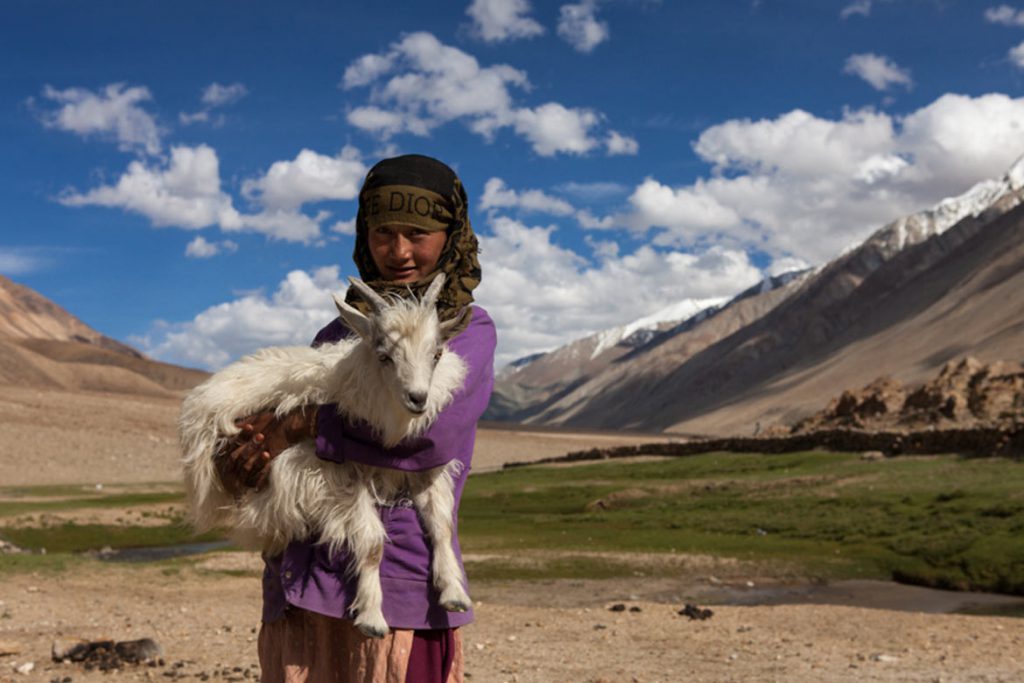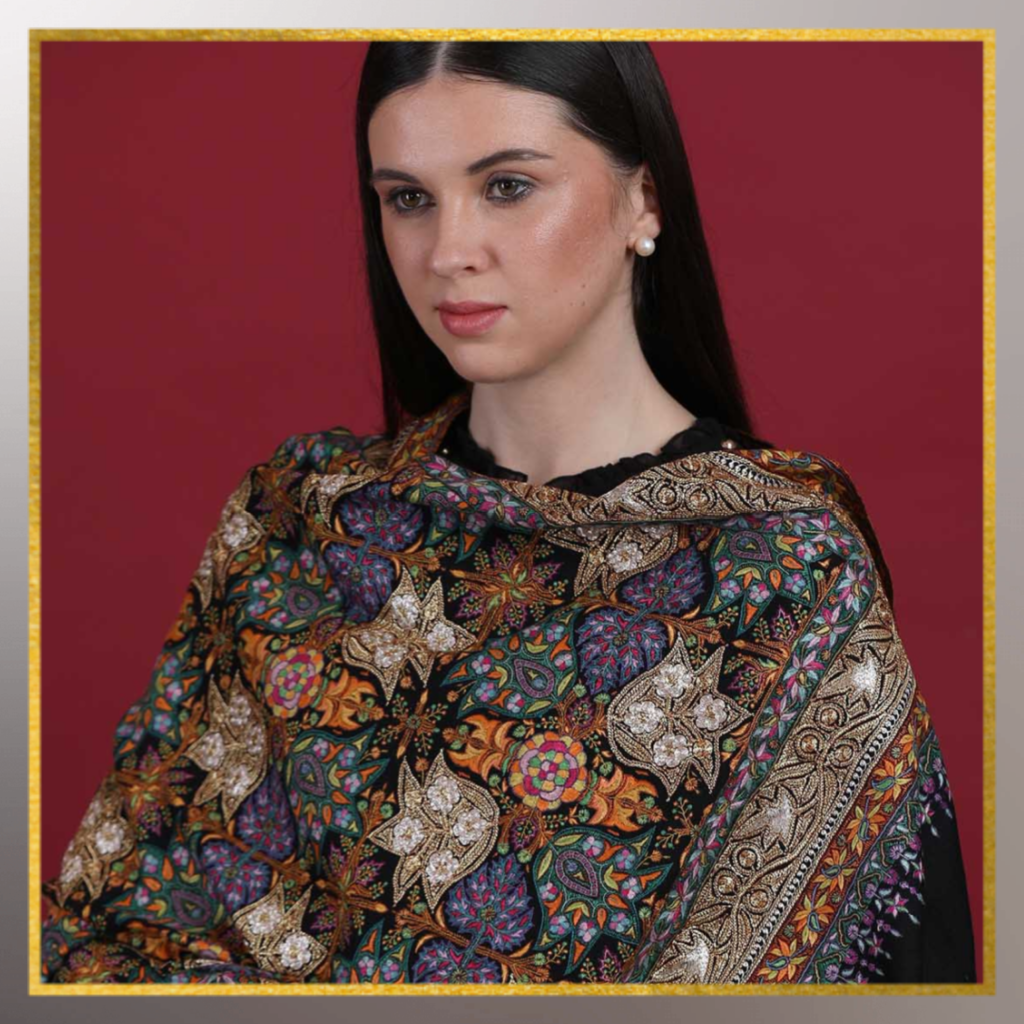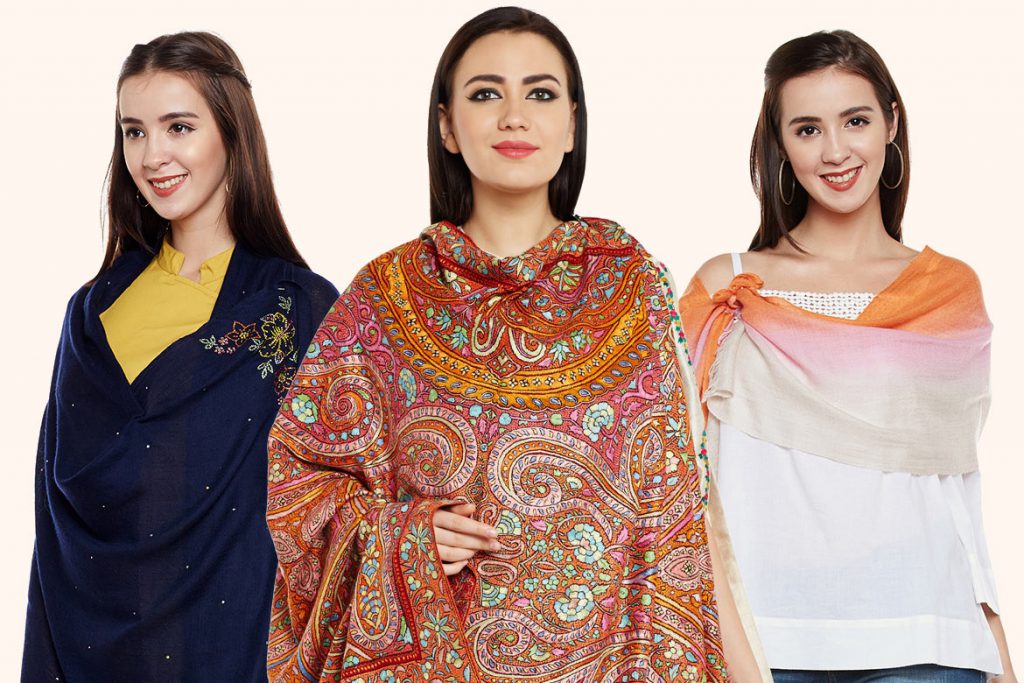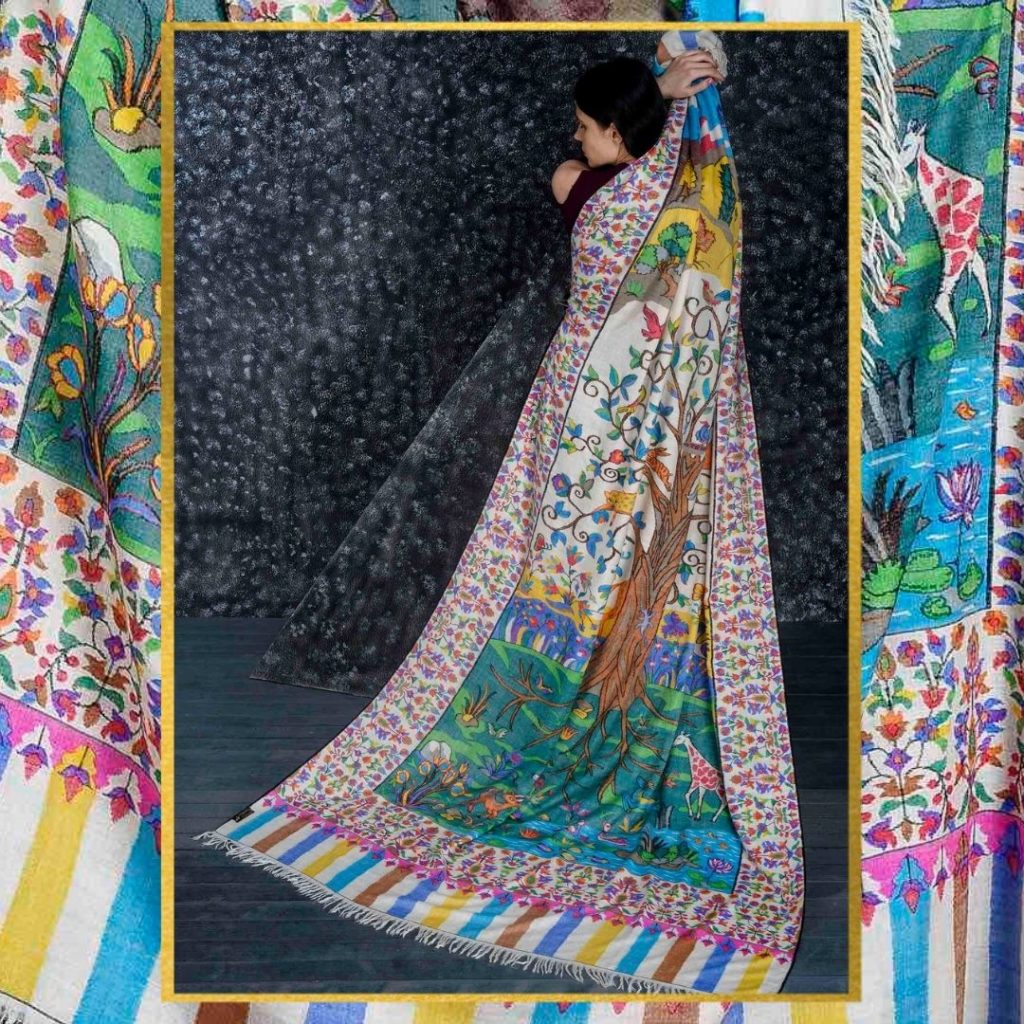Not everyone would know this, but the Kashmiri Pashmina shawl is the world's most sought-after fabric. Nothing in the world feels so luxurious and comfortable as does a Kashmiri Pashmina shawl or scarf. Being minimal in its demeanor, a Pashmina shawl adds an exceptional grace to any outfit, western or ethnic, traditional or modish, bright or pastel.
Processed in the most painstaking and skilled fashion, a single Pashmina shawl or wrap has the ability to transform your wardrobe into a whole new collection of a celebrity closet.
Apart from obvious and apparent reasons, there are a number of justifications for Pashmina to be selected for weddings. Let us analyze each one and decide for ourselves.
Where does Pashmina come from?
Ladakh is one of the coldest regions in the Jammu and Kashmir union territory. It homes a place called Changthang - over 15000 feet above sea level. This melancholic community of Buddhist monks experiences a harsh winter and the temperature dips below -40 degrees. The community is that of herders who are survived by exotic and beautiful changthangi goats. It is these goats that protect themselves in the winter with a soft and exceptionally warm raw wool called Pashm. The wool is warm enough to guard the goats against harsh weather conditions.

As summer arrives, the goats rub themselves against rough rocky surfaces and coarse bushes and trees to get rid of this wool which has now started to make the goats uneasy. The herders collect this wool, clean it properly, sort it according to certain quality standards and send it to Kashmir for further processing.
In Kashmir, this wool is again cleaned. It is then spun and then handwoven to attain an airy light soft fabric which is locally called Pashmina. The entire process takes hundreds of men and women to complete, and months or sometimes years to complete just one shawl. A typical shawl has measurements of 100*200 cms. The product is pure, handmade, and made out of the natural fibre. Being such labour intensive and painstaking to acquire, it is quite obvious to consider Pashmina for wedding.
Also read: The Trail of India's Cashmere Goat Men
Treasure of a Lifetime
A Pashmina shawl lasts for an entire lifetime, or even more if it is properly managed. In Kashmir, it has been a tradition to give your daughter your preserved Pashmina shawl as a gift when she is a bride. (As the daughter wears her mother’s shawl, the moment is full of emotions and love). This shawl can be even 30 years old. But the purity and originality are such that not a bit of exquisiteness and grace gets lost in the years. It is also a tradition in Kashmir to keep a Pashmina for weddings.
Wedding Pashminas
If the yarn is acquired by weavers and stored, then a plain Pashmina will take around 15-20 days to complete. It is however the embroidery that takes more time and makes the buyer wait for the shawl. If a shawl is to be minimally filled with embroidery, it would take a few months. Some elaborate designs which are widespread over the base such that the base isn't even visible, take 3-4 years to finish. Similarly, Kani Pashmina shawls too take a few years to get to the markets.

The reason for such a long length of time taken to complete a Pashmina is doing everything manually. The embroidery threads are so intricate, that a commoner might not consider it possible and human to cover a large shawl with it. Similarly, designs are elaborate and labyrinthine that it takes time to plan it, embroider it and add finishing touches.
Also read: Cashmere for Weddings & Beyond
Pashmina is Versatile

Traditionally, the Pashmina shawl was thought of as an accessory for mature women, (over 30 years of age). And it was only worn with ethnic apparel like a saree, salwar suit, bridal gowns, etc. But lately, Pashmina has evolved to be quite a versatile accessory and has been embraced by all ages and apparel. Now you can buy a Pashmina scarf for your teenage daughter and watch her look pretty graceful carrying it. Pashmina has even adapted to all types of apparel. You can wear a Pashmina with western wear, ethnic apparel, or casuals.
The reason for this versatility is Pashmina being able to embody patterns other than just embroidery, as it did in the past!
Now Pashminas can feature graphical prints, chic patterns, stripes and checks, sequins, Swarovski studs, and more, which make it as versatile as it could be.
Finesse of Pashmina
The yarn for Pashmina which is spun by Kashmiri women is so fine that it is barely visible. Pashmina yarn is just 12-16 microns in diameter (a human hair is 50 microns on average) which makes it one of the finest yarns in the world. This yarn leads to a Pashmina shawl being exceptionally light and soft, yet exceptionally warm and snug
For Men and women
Talking of versatility, one last reason to absolutely love Pashmina is its quality of being unisex. There are hand embroidery and Kani Pashmina shawls for men which look unconditionally stunning on them. Men can wrap plain Pashmina scarves with formal and casual wear. Kani Pashmina and embroidery full mens’ shawls can be ideal for festivals or wedding ceremonies.

Like a fine wine, Pashmina has always gotten better with age and never looks old. In fact, it is said that the more you wear it, the softer it gets. This makes Pashmina a must-have for your winter wardrobes.
Unlike most winter fabrics, Pashmina doesn't pill (when taken good care of) and stays fresh for an entire lifetime. Minimal and timeless, Pashmina never gets out of style and can be worn for more than 30 years looking more and more artistic and pleasing to the eyes every year.